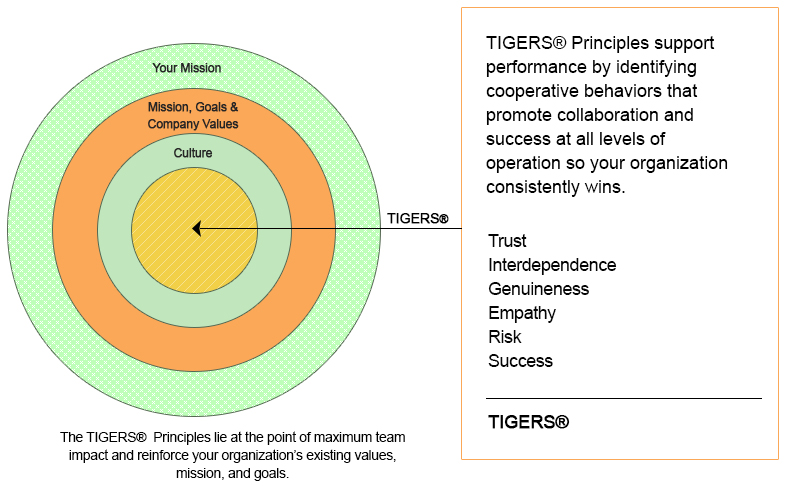Goeff’s notice came as a surprise. When Emily, his direct superior, asked why he was leaving, he couldn’t look her in the eye. Why employees quit was not a topic he wanted to take up with her.
“It’s an offer I couldn’t refuse” he replied.
Emily was heartbroken.
Geoff was a star. He was smart, quite capable, easy to get along with, and would deliver more than what was expected of him. He was well-loved, most of all.
… which was why his notice (and his seeming refusal to be a bit more honest) shook Emily to her core.
What could have gone wrong?
Why good employees quit and throw in the towel.
There isn’t always just one reason why employees quit.
Good employees quit for a mishmash of things that have been weighing their shoulders down – usually for a long time. But what we’ve learned through TIGERS® Success Series is that there is a common denominator that pushes great employees to leave their organizations.
Here are the top reasons why they quit.
The work environment or company culture is unhealthy.
In several exit interviews, many good employees reveal that the negative atmosphere in their workplace has become too much to tolerate on a daily basis. It doesn’t matter how many perks the company offers. Nothing counts if the workplace is toxic.
How toxic? The usual strains associated with running a business are expected, of course, but taking out the stress on people who are simply trying to help the company out can take its toll.
In small businesses most especially, a small team would often need to absorb large chunks of work. And these small teams have not been taught to be agile. The leader always has to project faith and confidence in the team. But if the leader is negative from the get-go, his pessimism can lead to employee burnout. Everyone dreads going to work. Instead of support, the environment is disruptive. Which leads us to…
Seeing good people leave.
Most employees won’t admit this, thinking how the reason may be too petty to be taken seriously. But seeing good employees leaving can break an already low morale.
When we take stock of a company’s long-term behavior, we usually notice a distinct pattern – when top employees (or even managers) leave, they often leave in waves.
This isn’t a rare scenario: A high-performing head for sales leaves for the traditional reasons (career growth, compensation, benefits, work-life balance etc). A few weeks later, the general manager discovers that the accounts officer, graphic designer, and social media manager pop up at the head for sales’ new company.
You could say that this could’ve been prevented by a non-compete clause, but it isn’t exactly a solution. A healthier solution is to zero in on your organization’s top performers and treat them well so they become advocates for the rest.
Bad managers are one reason why employees quit.
The cliche is true. People don’t leave companies, they leave managers. Employees often leave out of frustration with their direct supervisor. The root causes are many – disagreements, lack of professional development, lack of opportunity to move up — but the bottom line is the same. Bad managers lack engagement with employees.
A manager’s top priority is getting his functions done. But he should also make individual team members feel strengthened and empowered. Otherwise, how is his performance any different that dipping into the company till? If a poor manager affects your bottom line by reducing it through cost overruns (hiring and rehiring employees), how much can your bottom line take? How much should it? We would argue that the loss in net revenue is certainly not an “asset.”
It often happens that HR hires good talent. But as the months go by, the latter is slowly taken for granted. The focus has shifted from what his skills can do to what he lacks or needs to fix.
This isn’t to say that employees need to be pep-talked the way kindergarteners do. But everyone (though nobody would admit it), would like the occasional spotlight on what makes them great.
If an employee comes to you for an issue with their manager, take the issue seriously. Berating employees are definitely no-no’s. But more than that, look deeper. You may find yourself losing an employee,
Employees feel under utilized.
Talented employees leave when they are underutilized or challenged enough. You want self-motivated employees, of course. But superstars are people too. They still want to get support. When they do not receive support this is one reason why employees quit.
High-performing employees need to be challenged by their superiors. They need this because they know their caliber and the lack of stimulation leads to being stagnant. An employee who has decided to leave work needs to reconnect with their goals and purpose.
No advancement opportunities. No room for growth and development.
Future growth and promotional opportunities are high on most applicants’ list. Employees who feel that they are moving forward in their careers are 20 percent more likely to stay.
Sure — not everyone wants to be a manager or supervisor. However, when they learn group process skills, they can be brought onto problem solving teams to resolve complex organizational problems. When these problems result in cost savings or productivity improvements, employees can receive bonuses for that work that provide a net neutral cost/benefit with future savings for their organization in the following years. Agile teams like these provide employee enrichment that potentially is not available in supervisory roles.
On the other hand, those who don’t feel supported in their professional goals are three times more likely in search of a new company.
Organizations and teams that seem to be on the right track possess six principles in common: trust, interdependence, genuineness, empathy, risk resolution, and success. These form the acronym TIGERS®. In high-performance organizations, employees are engaged, committed to outcomes, and feel accountable for success. To make them feel this way, the culture must require constructive behavior- by everyone. And part of that is supportive coaching.
Care to dig deeper into the topic of why employees quit?
The following links are helpful.
- How Toxic Leaders Stifle Team Development Success
- Leader’s Psychopathic and Narcissistic Tendencies Make Employees Behave Badly at Work.
- 6 Reasons Your Best Employees Quit
- Reasons Employees Quit
Copyright TIGERS Success Series Inc. by Dianne Crampton
About TIGERS Success Series, Inc.
 TIGERS® Success Series provides a comprehensive, multi-pronged and robust system for improving both your work environment, profitability and project management team leadership success.
TIGERS® Success Series provides a comprehensive, multi-pronged and robust system for improving both your work environment, profitability and project management team leadership success.
We specialize in training your managers in group leadership skills that build workforce cooperation and high performance team dynamics. Scaled to grow as your organization and leadership performance grows, our proprietary Team Behavior Profile, Management and Project Team Leadership training workshops, and consultant/project manager licensing are based on the six principles that our extensive research found to be the right mix to make this happen.
Schedule a phone call to learn more or to invite us to present at your next organizational gathering.
